#medieval illumination
Text
the 50$ sword i got from a shady flea market was diagnosed to be a wall-hanger rather than a prop so i spent today making it the prettiest wall-hanger in the land


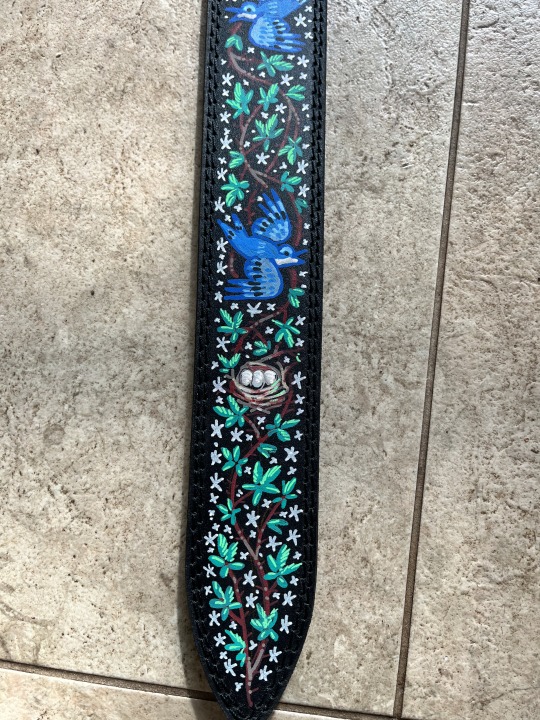

22K notes
·
View notes
Text
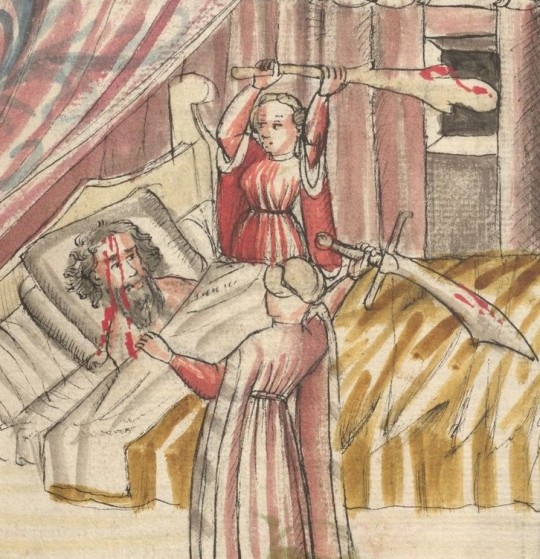
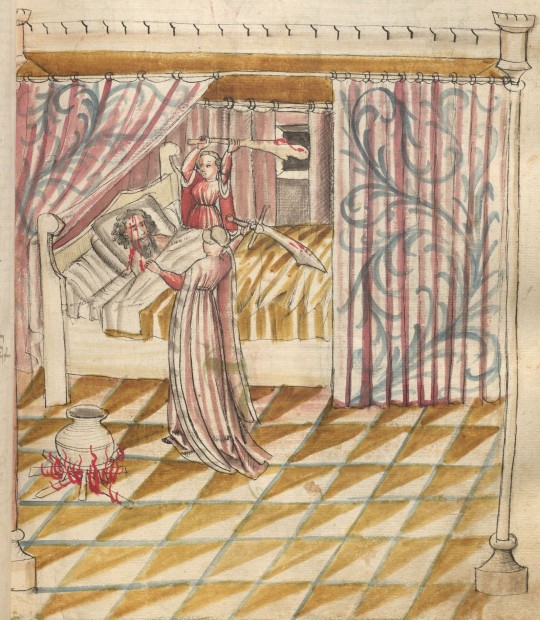
an unpleasant awakening
in a copy of konrad von würzburg's "trojanerkrieg", ca. 1441
source: Nürnberg, GNM, Hs. 998, fol. 15r
#the illustration depicts king peleus being murdered by his daughters at the command of medea#15th century#medieval art#mythology#medieval illumination#medieval#murder#violence#bed#weapons#trojanerkrieg#konrad von würzburg
6K notes
·
View notes
Text
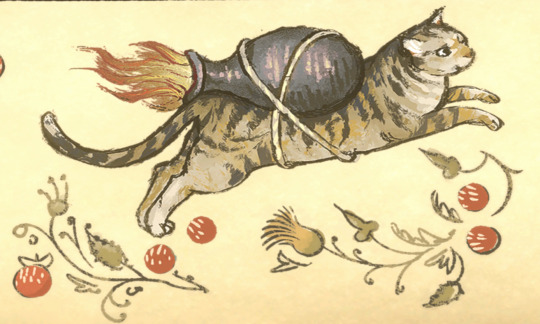


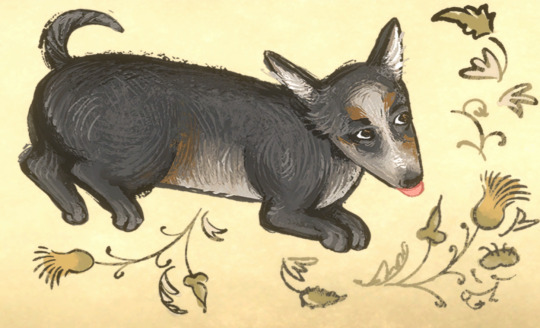

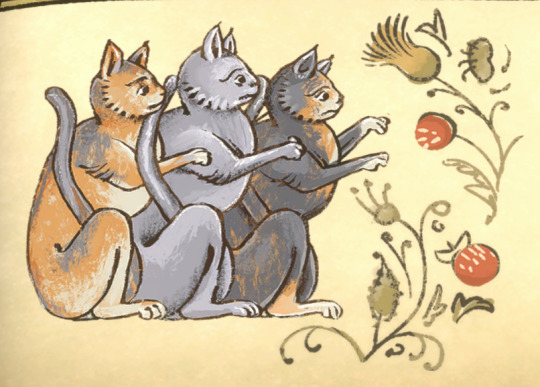


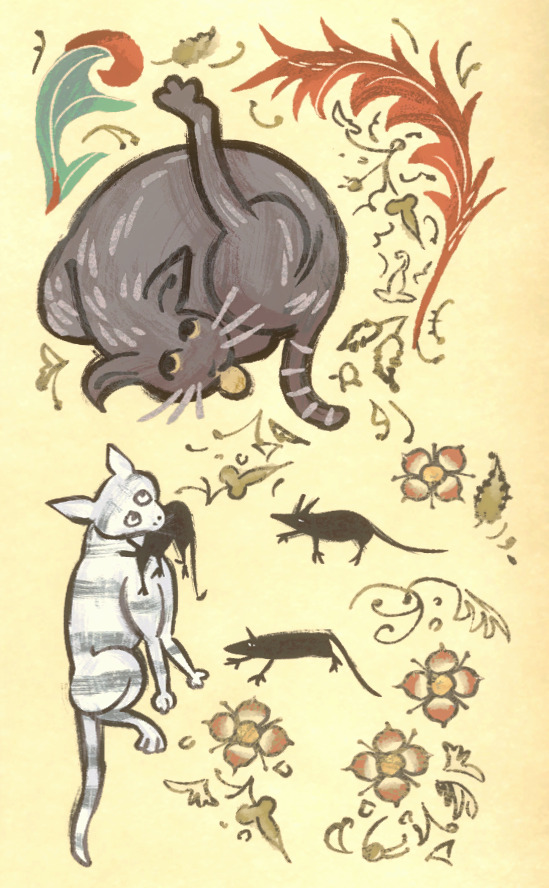
Drawings From the Edges of Pentiment Pages: Dogs and Cats
#pentiment#my favorite is the rocket cat#obsidian entertainment#medieval illumination#medieval illustration#medieval style#literate rpg#single player rpg#cats#dogs#honestly it's so good#in such a nerdy way#video games#video game art#worldbuilding#xbox#mausfänger#mausfanger#images with alt text#alt text
5K notes
·
View notes
Photo


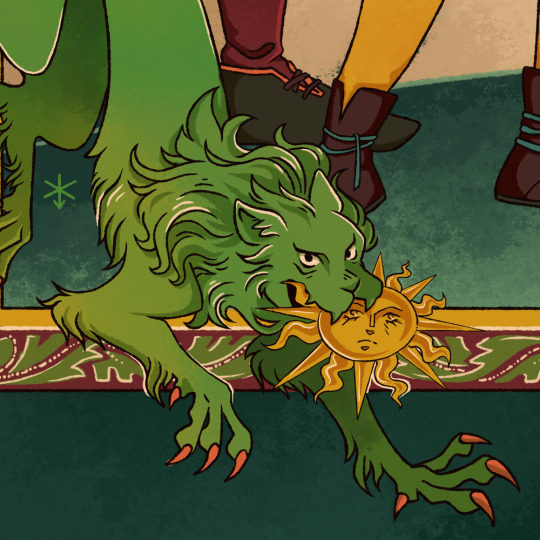

✣ 𝖜𝖎𝖙𝖈𝖍𝖊𝖘 𝖆𝖓𝖉 𝖆𝖑𝖈𝖍𝖊𝖒𝖎𝖘𝖙𝖘 ✣
#medieval#dragon#medieval illumination#Alchemy#witch#witchcraft#green lion#creature art#bestiary#medieval art#this is a participation to the poster contest of a local medieval fair - I hope it makes it !
170 notes
·
View notes
Text
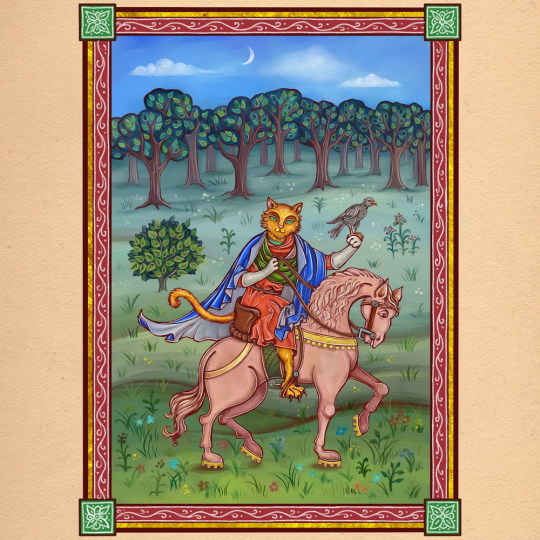

My illustration in the style of a medieval tapestry
#artists on tumblr#artwork#illustration#art#medieval tapestry#Middle Ages#medieva lbook#medieval illumination#medieval cat#fantasy#medieval fantasy#fantasy art#fantasy cat#cat knight#medieval art#fantasy illustration#tumblr art
36 notes
·
View notes
Text

a medieval character commission for the character Cookie the Wyrm.
Co-Fi | Patreon | Twitter | Youtube | Trello
#furry#medieval illumination#medieval#illustration#historical#cookie#dragon#my art#fursona#dragon fursona#furry art
5 notes
·
View notes
Text

“there’s a lot you can do with a snail.” ~my english professor about Virginia Woolf’s “Kew Gardens”
#english#academia#kew gardens#virginia woolf#medieval#illumination#medieval illumination#big brain moment#blake's last braincell#the archivist will speak to you now
8 notes
·
View notes
Text
Illuminated Manuscripts

“Christ Kneeling in Prayer in the Garden of Gethsemene” (c. 1475 France, Loire Valley)
Illuminated manuscripts embody the extraordinary union of beauty and knowledge.
Though the art of making them disappeared with the advent of the printing press, the most spectacular manuscripts survived the ages.
Here are 8 masterworks of medieval illumination: 🧵
1. The Morgan Crusader Bible, 13th century

Commissioned by French King Louis IX, the Morgan Crusader Bible depicts events from the Hebrew Bible set in the scenery and attire of 13th-century France — it puts a medieval twist on Old Testament stories.
Consisting of 46 folios, the manuscript displays illustrations accompanied by text written in either Latin, Persian, Arabic, or Hebrew.
The vivid colors and attention to detail make it one of the most popular illuminated manuscripts.
2. The Black Hours, 15th century
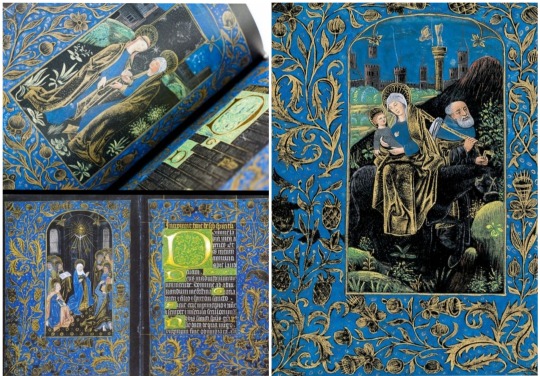
The Black Hours is a book of hours (a type of prayer book) created in Bruges, Belgium.
The style is in imitation of Wilhelm Vrelant, the most popular illuminator of the period and constructed of vellum (calfskin) that’s been dyed pitch black.
Gold and blue paint overlay the dark background to create an almost otherworldly look.
Written in silver and gold ink, the text lists the prayers to be said while depictions of Bible stories aid the reader in meditation.
3. Book of Kells, 9th century

Among the most iconic medieval manuscripts is the Book of Kells.
Created in a Columban monastery, the text is the pinnacle of early medieval calligraphy and illumination.
The graphics are a blend of insular art (the post-Roman era style of art popular in Irish monasteries) and traditional Christian iconography.
Plants, animals, Celtic knots, and biblical figures decorate the 680 page volume to tell the story of Jesus’ life.
4. Codex Argenteus, 6th century
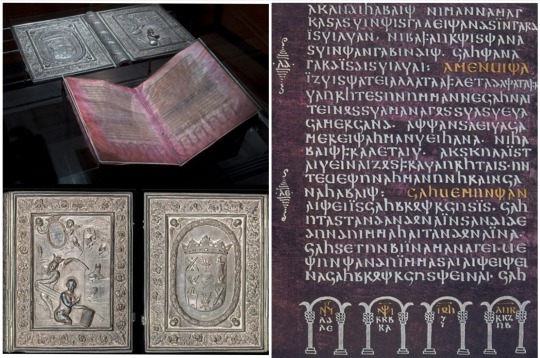
Latin for “Silver Book,” the Codex Argenteus contains the four gospels written in Gothic, making it one of the world’s foremost sources for the now-extinct language.
The book was likely written as a gift for Ostrogothic king, Theodoric the Great.
The work is particularly striking due to its purple-stained vellum pages, metallic ink, and silver binding. Looks almost Tolkienesque…
5. Acre Bible, 13th Century

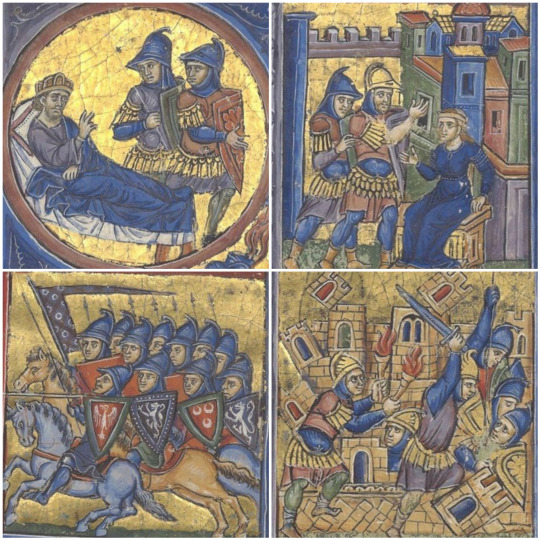
Another work commissioned by Louis IX, the Acre Bible was compiled shortly after the king’s release from captivity during the disastrous 7th crusade.
Upon returning to France, he deposited the masterwork in his newly built Sainte-Chapelle library.
It contains 19 books of the Old Testament, and its illustrations are considered masterpieces of crusader art.
6. The Aberdeen Bestiary, 12-13th century

A bestiary is essentially an encyclopedia of animals and mythical beasts.
They gained popularity throughout the Middle Ages as readers could learn about exotic animals or mythical creatures.
This one was owned by Henry VIII and features a retelling of the Genesis creation story with fantastical images of creatures both real and imagined.
7. The Very Rich Hours of the Duke of Berry, 15th century

The best surviving example of the International Gothic style of illumination, it’s one of the most lavishly designed late-medieval manuscripts and contains well over 100 illustrations.
Despite beautiful scenes covering most of its pages, the work didn’t shy away from darker imagery.
8. The Berthold Sacramentary, 13th century

Commissioned by the abbot of Weingarten Abbey, this manuscript is a form of missal called a sacramentary used by priests for liturgical services.
A sacramentary gives the priest's readings and prayers for the Mass. This one is a paragon of Romanesque art.
#illuminated manuscripts#medieval manuscripts#medieval illumination#Middle Ages#medieval period#art history#books#handmade books#scribe#illuminator#The Morgan Crusader Bible#The Black Hours#Book of Kells#Codex Argenteus#Acre Bible#The Aberdeen Bestiary#The Very Rich Hours of the Duke of Berry#The Berthold Sacramentary#Wilhelm Vrelant#King Louis IX#medieval calligraphy#Theodoric the Great#bestiary#Henry VIII#Weingarten Abbey#sacramentary#missal
1 note
·
View note
Text

Everyone liked the color charts I test printed for Basilisk so much, I felt compelled made a nice version! Great for anyone that has an interest in Risograph printing, historical pigments, or weird medieval marginalia.
(buy it here)
#Basilisk is in the process of restocking FYI for anyone that wants both :)#risograph#color chart#medieval#marginalia#medieval manuscripts#medieval art#illuminated manuscript#printmaking#monsters
13K notes
·
View notes
Text


An angel. Alchemy treaty Aurora Consurgens, 1420-1450
#medieval redraw#alchemy#angel#manuscript illumination#My interpretation of the general iconography is probably very off so take it purely as an aesthetic pursuit lol#all of this is alchemical allegory#i recommend looking up the other weirdo miniatures from this manuscript it slaps
17K notes
·
View notes
Text
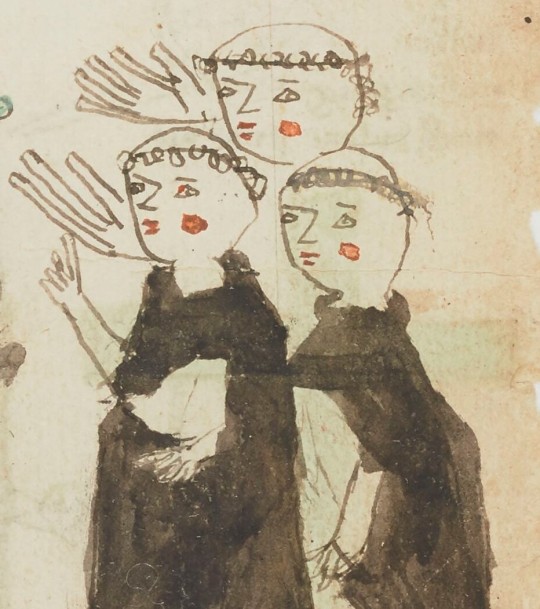
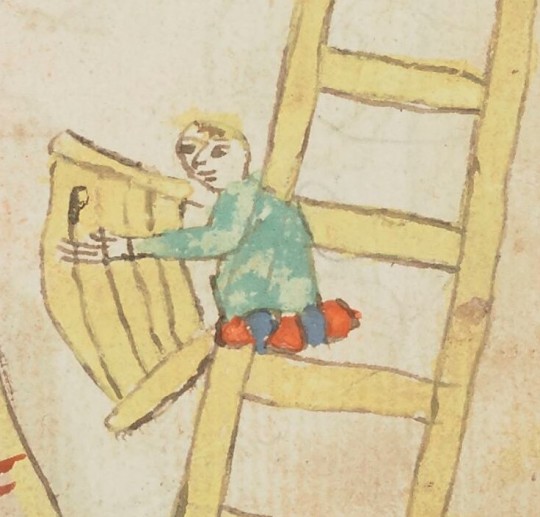

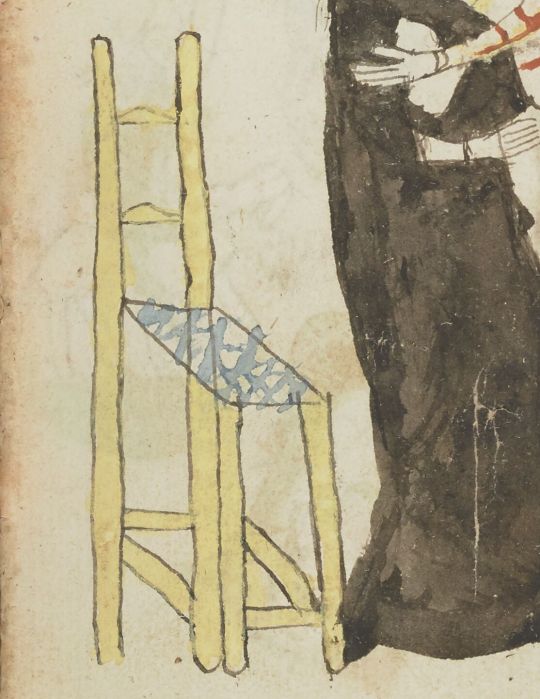
monks, angel, devils, and a chair
in a miscellany manuscript, alsace, ca. 1430
source: Paris, BNF, ms. allem. 222, fol. 120r-122r
#obsessed with this manuscript#the illuminations are so poorly drawn it's really endearing#MonkWhoCouldn'tDrawIfHisLifeDependedOnItCore#15th century#angel#devils#demons#chair#monk#medieval art#medieval illumination
2K notes
·
View notes
Text
hi sorry s'cuse me but were NONE OF YOU GOING TO TELL ME ABOUT BLACK BOOKS OF HOURS???

LOOK AT THIS MAGNIFICENT GOTH-ASS SHIT

EGADDDDDDD

THE IRON-COPPER SOLUTION USED TO DYE THE PAGES WAS SO CORROSIVE THAT THERE ARE VERY FEW SURVIVING EXAMPLES
THESE BOOKS WERE LITERALLY TOO METAL TO LIVE
i can't
11K notes
·
View notes
Text
Medieval Scorpions Effortpost
So yesterday I reblogged this post featuring an 11th-century depiction of the Apocalypse Locusts from Revelations, noting the following incongruity as another medieval scorpion issue:
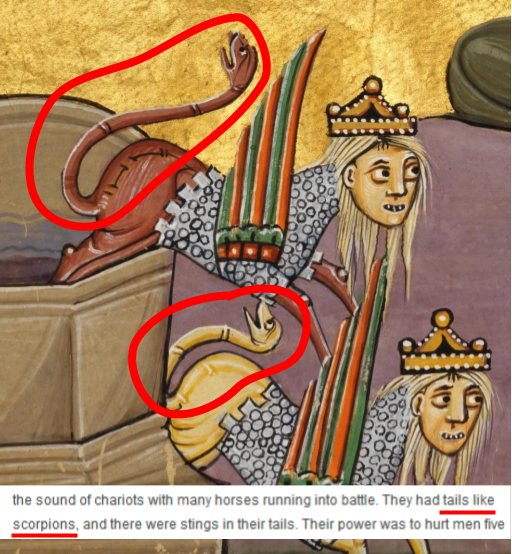
The artist, as you can see, has interpreted "tails like scorpions" as meaning "glue cheerful-looking snakes to their butts".
Anyway, it occurred to me that the medieval scorpion thing might not be as widely known as I think it is, and that Tumblr would probably enjoy knowing about it if it isn't known already. So, finding myself unable to focus on the research I'm supposed to be doing, I decided to write about this instead. I'll just go ahead and put a cut here.
As we can see in the image above, at least one artist out there thought a "scorpion" was a type of snake. Which makes it difficult to draw "tails like scorpions", because a snake's tail is not that distinctive or menacing (maybe rattlesnakes, but they don't have those outside the Americas). So they interpreted "tails like scorpions" as "the tail looks like a whole snake complete with head".
Let me tell you. This is not a problem unique to this illustration.
See, people throughout medieval Europe were aware of scorpions. As just alluded to, they are mentioned in the Bible, and if the people producing manuscripts in medieval Europe knew one thing, it was Stuff In Bible. They're also in the Zodiac, which medieval Europe had inherited through classical sources. However, let's take a look at this map:
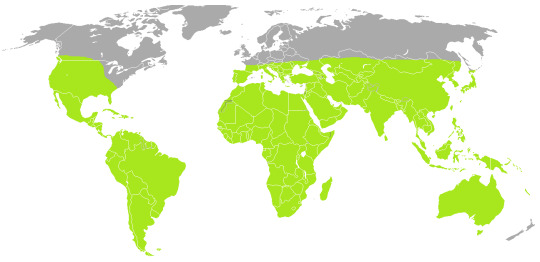
That's Wikipedia's map of the native range of the Scorpiones order, i.e., all scorpion species. You may notice something -- the range just stops at a certain northern latitude. Pretty much all of northern Europe is scorpion-free. If you lived in the north half of Europe, odds were good you had never seen a scorpion in your life. But if you were literate or educated at all, or you knew they were a thing, because you'd almost certainly run across them being mentioned in texts from farther south. And those texts wouldn't bother to explain what a scorpion was, of course -- everyone knows scorpions, right? When was the last time you stopped to explain What Is Spiders?
So medieval writers and artists in northern Europe were kind of stuck. There was all this scorpion imagery and metaphor in the texts they liked to work from, but they didn't really know what a scorpion was. Writers could kind of work around it (there's a lot of "oh, it's a venomous creature, moving on"), but sometimes they felt the need to break it down better. For this, of course, they'd have to refer to a bestiary -- but due to Bestiary Telephone and the persistent need of bestiary authors to turn animals into allegories, one of the only visual details you got on scorpions was that they... had a beautiful face, which they used to distract people in order to sting them.
And look. I'm not here to yuck anyone's yum, but I would say that a scorpion's face has significant aesthetic appeal only for a fairly small segment of the population. I'm sure you could get an entomologist to rhapsodize about it a bit, but your average person on the street will not be entranced by the face of a scorpion. So this did not help the medieval Europeans in figuring out how to depict scorpions. There was also some semantic confusion -- see, in some languages (such as Old and Middle English), "worm" could be a general term for very small animals of any kind. But it also could mean "serpent".* So there were some, like our artist at the top of the post, who were pretty sure a scorpion was a snake. This was probably helped along by the fact that "venomous" was one of the only things everyone knew about them, and hey, snakes are venomous. Also, Pliny the Elder had floated the idea that there were scorpions in Africa that could fly, and at least one author (13th-century monk Bartholomaeus Anglicus) therefore suggested that they had feathers. I don't see that last one coming up much, I just share it because it's funny to me.
*English eventually resolved this by borrowing the Latin vermin for very small animals, using the specialized spelling wyrm for big impressive mythical-type serpents, and sticking with the more specific snake for normal serpents.
Some authors, like the anonymous author of the Ancrene Wisse, therefore suggested that a scorpion was a snake with a woman's face and a stinging tail. (Everyone seemed to be on the same page with regards to the fact that the sting was in the tail, which is in fact probably the most recognizable aspect of scorpions, so good job there.) However, while authors could avoid this problem, visual artists could not. And if you were illustrating a bestiary or a calendar, including a scorpion was not optional. So they had to take a shot at what this thing looked like.
And so, after this way-too-long explanation, the thing you're probably here for: inaccurate medieval drawings of scorpions. (There are of course accurate medieval drawings of scorpions, from artists who lived in the southern part of Europe and/or visited places where scorpions lived; I'm just not showing you those.) And if you find yourself wondering, "how sure are you that that's meant to be a scorpion?" -- all of these are either from bestiaries or from calendars that include zodiac illustrations.
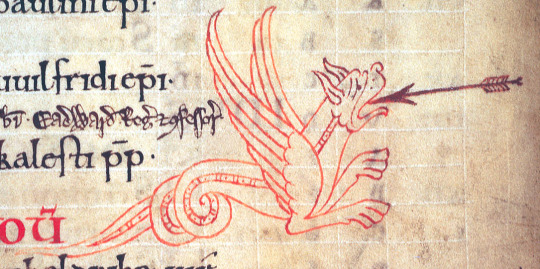
11th-century England, MS Arundel 60. (Be honest, without the rest of this post, if I had asked you to guess what animal this was supposed to be, would you have ever guessed “scorpion”?)
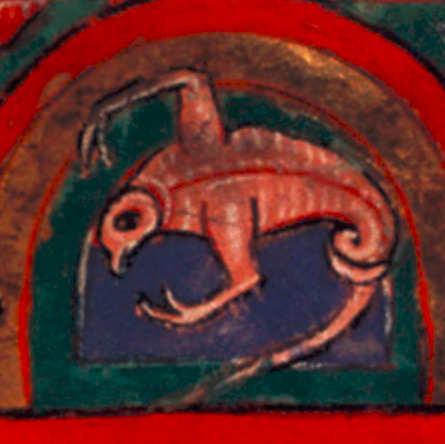
12th-century Germany, "Psalter of Henry the Lion". (Looks a bit undercooked. Kind of fetal.)
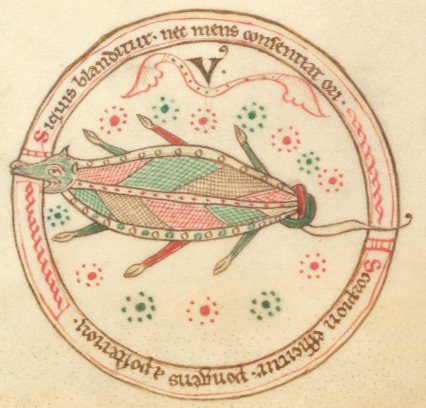
12th-century France, Peter Lombard's Sententiae. (Very colorful, itsy bitsy claws, what is happening with that tail?)
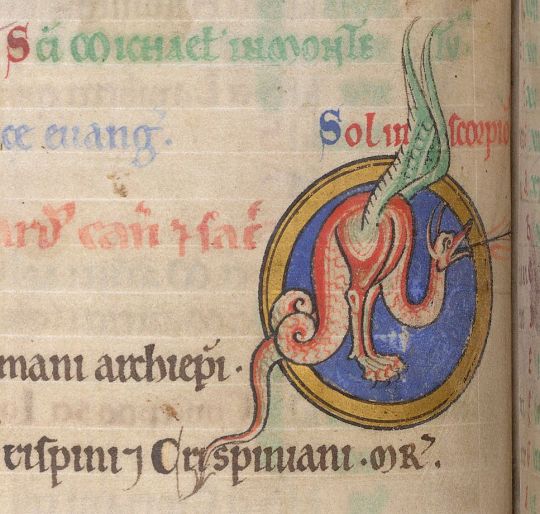
12th-century England, "The Shaftesbury Psalter". (So a scorpion is some sort of wyvern with a face like a duck, correct?)

13th-century France, Thomas de Cantimpré's Liber de natura rerum. (I’d give them credit for the silhouette not being that far off, but there’s a certain bestiary style where all the animals kind of look like that. Also note how few of these have claws.)
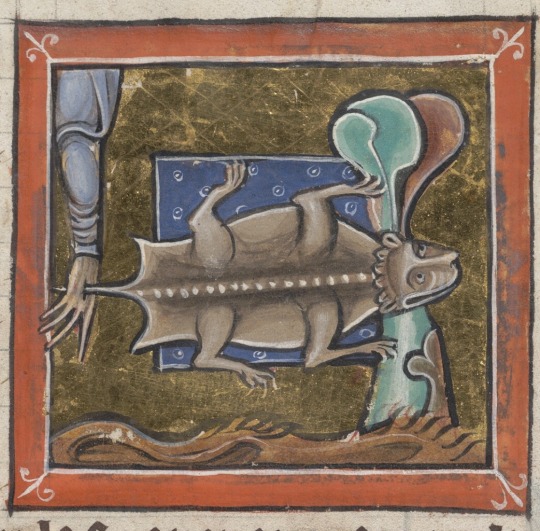
13th-century England, "The Bodley Bestiary". (Mischievous flying squirrel impales local man’s hand, local man fails to notice.)
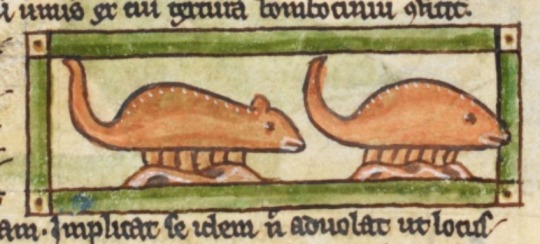
13th-century England, Harley MS 3244. (A scorpion is definitely either a mouse or a fish. Either way it has six legs.)
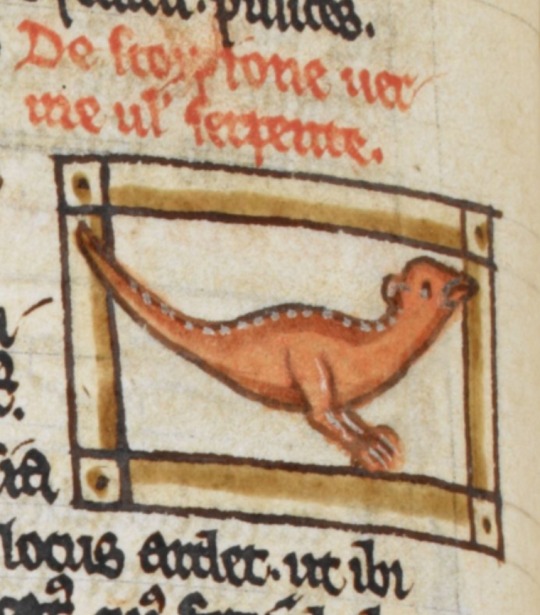
13th-century England, Harley MS 3244. (Wait, no, it’s a baby theropod, and it has two legs. (Yes, this is the same manuscript, that’s not an error, this artist did four scorpions and no two are the same.))

13th-century England, Harley MS 3244. (Actually it’s a lizard with tiny ears and it has four legs.)

13th-century England, Harley MS 3244. (Now that we’re at the big fancy illustration, I think I’ve got it — it’s like that last one, but two legs, longer ears, and a less goofy face. Also I’ve decided it’s not pink anymore, I think that was the main problem.)

13th-century England, MS Kk.4.25. (A scorpion is a flat crocodile with a bear’s head.)
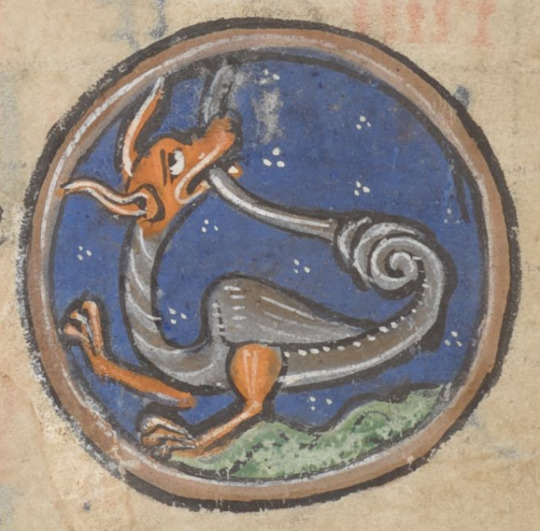
13th-century England, "The Huth Psalter". (Wyvern but baby! Does not seem to be enjoying biting its own tail.)
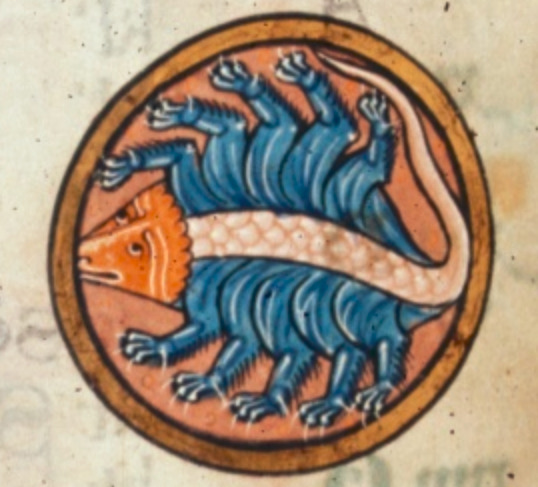
13th-century England, MS Royal 1 D X. (This triangular-headed gentlecreature gets the award for “closest guess at correct limb configuration”. If two of those were claws, I might actually believe this artist had seen a scorpion before, or at least a picture of one.)

13th-century England, "The Westminster Psalter". (A scorpion is the offspring of a wyvern and a fawn.)
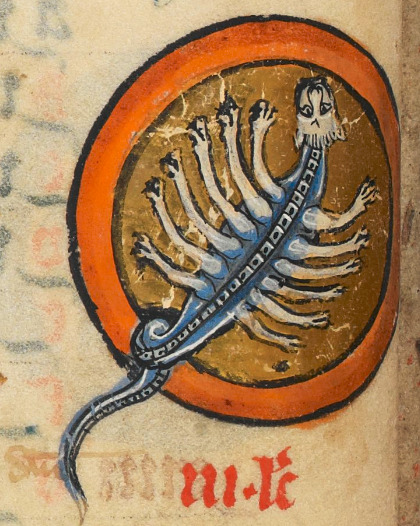
13th-century England, "The Rutland Psalter". (Too many legs! Pull back! Pull back!)

13th or 14th-century France, Bestiaire d'amour rimé. (This is very similar to the fawn-wyvern, but putting it in an actual Scene makes it even more obvious that you’re just guessing.)
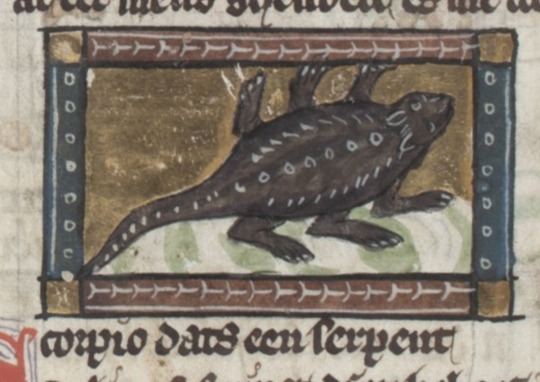
14th-century Netherlands, Jacob van Maerlant's Der Naturen Bloeme. (More top-down six-legged guys that look too furry to be arthropods.)

14th-century Germany, MS Additional 22413. (That is clearly a turtle.)

14th-century France, Matfres Eymengau de Beziers's Breviari d'amor. (Who came up with that head shape and what was their deal?)
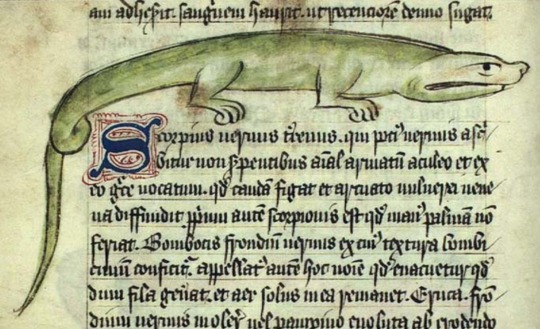
15th-century England, "Bestiary of Ann Walsh". (Screw it, a scorpion is a big lizard that glares at you for trying to make me draw things I don’t know about.)
I've spent way too much time on this now. End of post, thank you to anyone who got all the way down here.
#medieval#medieval creatures#medieval art#scorpions#medieval scorpions#manuscript#medieval manuscripts#illuminated manuscript
6K notes
·
View notes
Text
I'd like to introduce you to LJS 57, a compendium of Astronomical text in Hebrew, written in Spain around 1391. It's an interesting combination of astronomy and astrology, and illustrates how the division between "science" and "not science" was not nearly so clear in the past as it is today. It has some fantastic illustrations of constellations!
🔗:
#medieval#manuscript#medieval manuscript#14th century#hebrew#astronomy#astrology#stars#constellations#illustrations#illuminations#diagrams#history of science#book history#rare books
4K notes
·
View notes
Photo

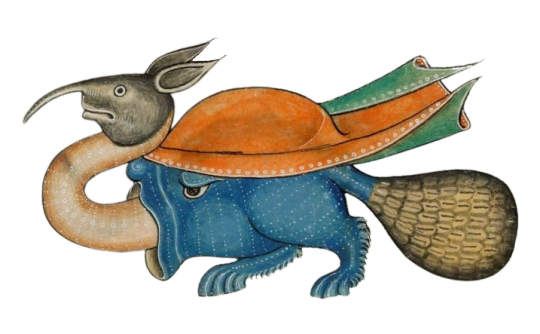
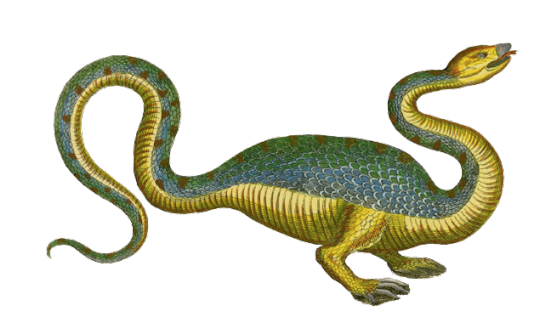

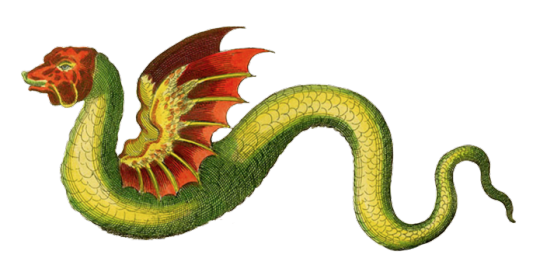
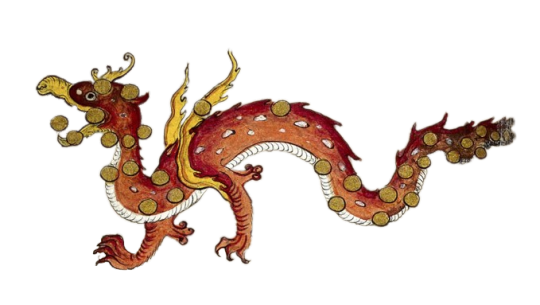
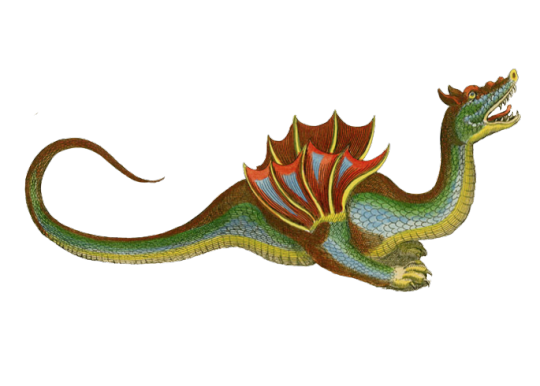
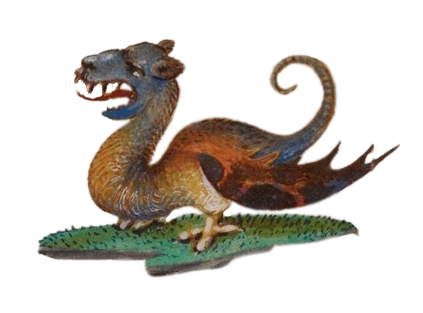
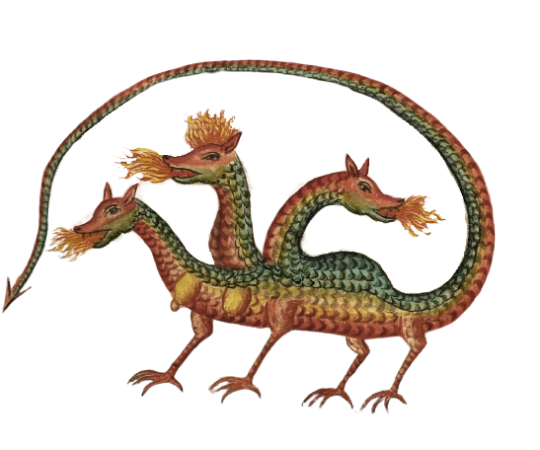
Medieval dragonlike creature PNGs.
(1. 2. 3. 4. 5. 6. 7. 8. 9.)
#png#pngs#sticker#stickers#moodboard#artboard#imageboard#transparent#collage#polyvore#shoplook#medieval#dragons#illuminated manuscript#manuscript
10K notes
·
View notes
Text

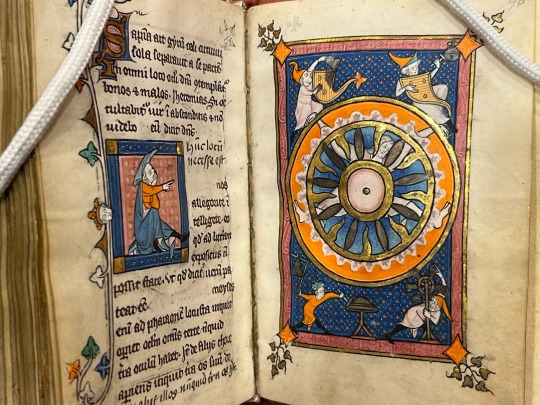

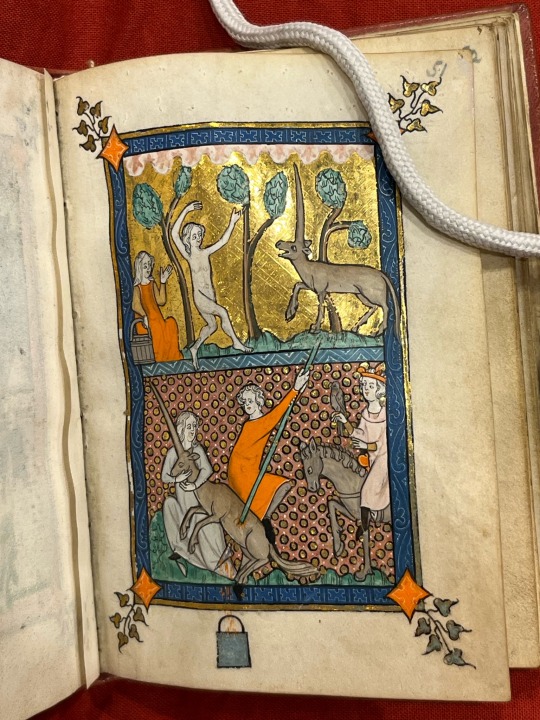



Amazing Christian mystical art from a medieval manuscript!
@cryptotheism Get a load of the colors on this one! I don’t know which one this is because I didn’t call it up myself (and I think this is one of the ones you needed special permission for, anyway), but it’s incredible.
2K notes
·
View notes